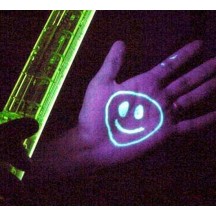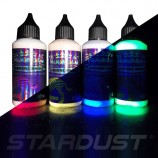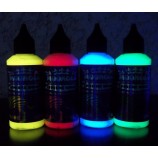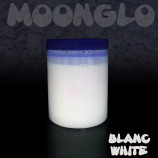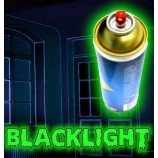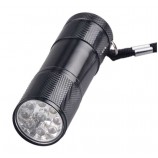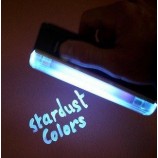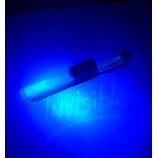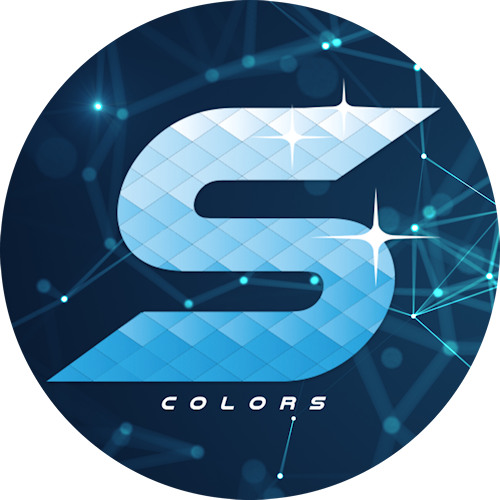Black light reacting paints belong to the photoluminescent effect paints because they have physicochemical properties making them bright in certain situations. Blacklight paints produce photoluminescence by reacting to ultraviolet light.
Black light fluorescent paint is a product available at the bottom of the page, in 8 colours for the water-based paint range and 8 colours for solvent-based inks.
At the molecular level, the active pigments in the paint react when they are excited by light waves in the range between 360 and 380 nanometers.
The result is an intense, non-decreasing coloured light emission. On the other hand, the luminous phenomenon goes inactive instantaneously in the event of removal of the excitation source (UV neon, UV Led, UV torch)
USE and SUBSRATES:
Substrates such as walls, paper, cardboard, fabrics, and wood are very suitable for Moonglo paints. These products are not normally intended for use on the skin. The “ink” range is a liquid formulation for printing or marking, with 1 water-based colour and 7 solvent colours.
The appearance of black light paint Blacklight
APPEARANCE:
By day, the products are perfectly colourless and whitish in appearance, they are semi-transparent. Colours appear and light up only through radiation of approximately 360-390 nm. Are they really invisible?
Ink paints can leave noticeable whitish traces when applied over very dark backgrounds. On the other hand, liquid inks are almost invisible.
NAME:
These are 'invisible fluorescent' paints. They can be referred to as Black Light, Blacklight or UV fluorescent paints. These paints differ from the conventional fluorescent range, which everyone knows well: the latter are not colourless, they are the "fluorescent hues" which are very visible by day and as effective as those of the invisible range.
MIXTURE:
The primary colours (Pink, Green, Blue, Yellow) are miscible to produce other colours like Purple, Red, White, or Orange (according to the principle of luminous colours). Some colours, like Green, are more intense and better perceived by the human eye than others, like Blue or Yellow.
Blacklight paints and wave range
What is ultraviolet light ? Light is a set of radiations, of which a small part constitutes light visible to the human eye. This wave is measured in nanometers (nm). This visible range extends from Purple (395 nm), goes through all the colours of the rainbow, and ends to Red (around 920 nm).
Ultraviolet rays are short, more energetic, and included in the invisible range (200 - 365 nm). Red light becomes infrared and invisible beyond 920 nm.
Paints during the day
Did you know that the Sun emits all types of light waves, including the famous UVs ? And as Blacklight paints react to UVs by lighting up, in broad daylight, the fluorescent phenomenon is no exception to the rule: colours will light up when they are brought into contact with sunlight, but this will not be obvious, because the fluorescence emitted is reduced by the ambient light.
It is also not recommended to expose products for a long time to strong sunlight. In case of excessive exposure, an alteration can occur, especially for the colours Purple, White, and Yellow. This reaction may be reversible.
Precautions regarding Blacklight paints
In accordance with Regulation (EC) No 1272/2008, Directives 67/548 / EEC, 1999/45 / EC, and their adaptations, the paints do not present a physical danger. This mixture is not harmful to health or the environment.



















